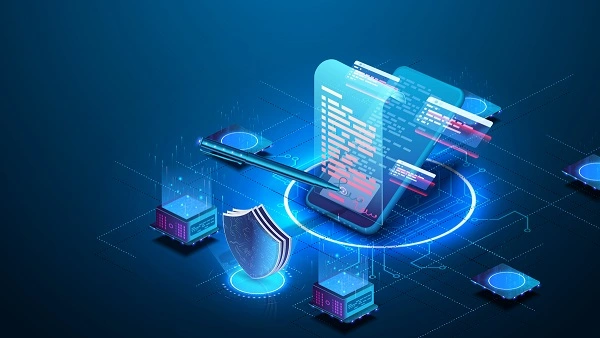Embracing the Shift: Exploring the Ascendance of Decentralized Applications (dApps) and Their Disruptive Potential

In the era of the digital revolution, centralized platforms have held sway over the online domain, exercising control over vast reservoirs of data and user information. However, a transformative technological wave is surfacing, promising a shift towards a more democratized and user-centric internet. Enter decentralized applications, or dApps, built on blockchain technology, offering a decentralized alternative to conventional applications with the potential to disrupt myriad industries.
Understanding dApps:
Diverging from conventional applications hosted on centralized servers, dApps function within a decentralized network. This entails the distribution of the application's code and data across a peer-to-peer network, eliminating the necessity for a singular point of control.
This decentralization bestows empowerment upon users through:
• Increased Data Ownership: Users retain control over their data and have the authority to choose with whom they share it.
• Enhanced Transparency: The underlying code and transactions are transparent and verifiable, fostering trust and accountability.
• Greater Security: The distributed nature of the network fortifies dApps against censorship, manipulation, and attacks.
• Reduced Reliance on Intermediaries: Users can engage directly with each other without depending on centralized platforms.
Unpacking the Potential for Disruption:
The distinctive attributes of dApps render them applicable to various sectors across diverse industries.
Here are key domains where dApps possess the potential to bring about disruption:
• Decentralized Finance (DeFi): Transforming the financial sector, dApps facilitate peer-to-peer lending, borrowing, and trading sans traditional intermediaries, promising heightened efficiency, lower fees, and increased accessibility to financial products.
• Supply Chain Management: Enhancing transparency and traceability within supply chains, dApps track goods and materials throughout their journey, curbing fraud, counterfeiting, and inefficiencies to bolster product quality and consumer trust.
• Identity Management: Decentralized identity solutions empower users to control their digital identities, securely sharing information with selected parties and eliminating the need for third-party intermediaries, ensuring greater data sovereignty.
• Gaming: Gaining momentum in the gaming industry, dApps introduce in-game economies with real-world value through non-fungible tokens (NFTs), enabling players to truly own digital assets and participate in a more decentralized gaming ecosystem.
• Content Creation and Sharing: Empowering creators, dApps provide direct access to audiences without reliance on centralized platforms that often take a substantial share of revenue, promising fairer compensation and fostering a more diverse and open content ecosystem.
Navigating Challenges and the Path Forward:
Despite their potential, dApps confront challenges such as scalability limitations, user interface complexities, and regulatory uncertainties. Nevertheless, continuous advancements in blockchain technology and dedicated developer efforts are clearing the path to surmount these obstacles, unlocking the full potential of dApps.
The rise of dApps signifies a pivotal moment in the digital landscape. Granting users greater control over their data, fostering transparency, and eliminating dependence on central authorities, dApps stand poised to fundamentally alter our interaction with technology and disrupt well-established industries. While challenges persist, the undeniable momentum surrounding dApps suggests their impact will reverberate across diverse sectors in the years ahead.

